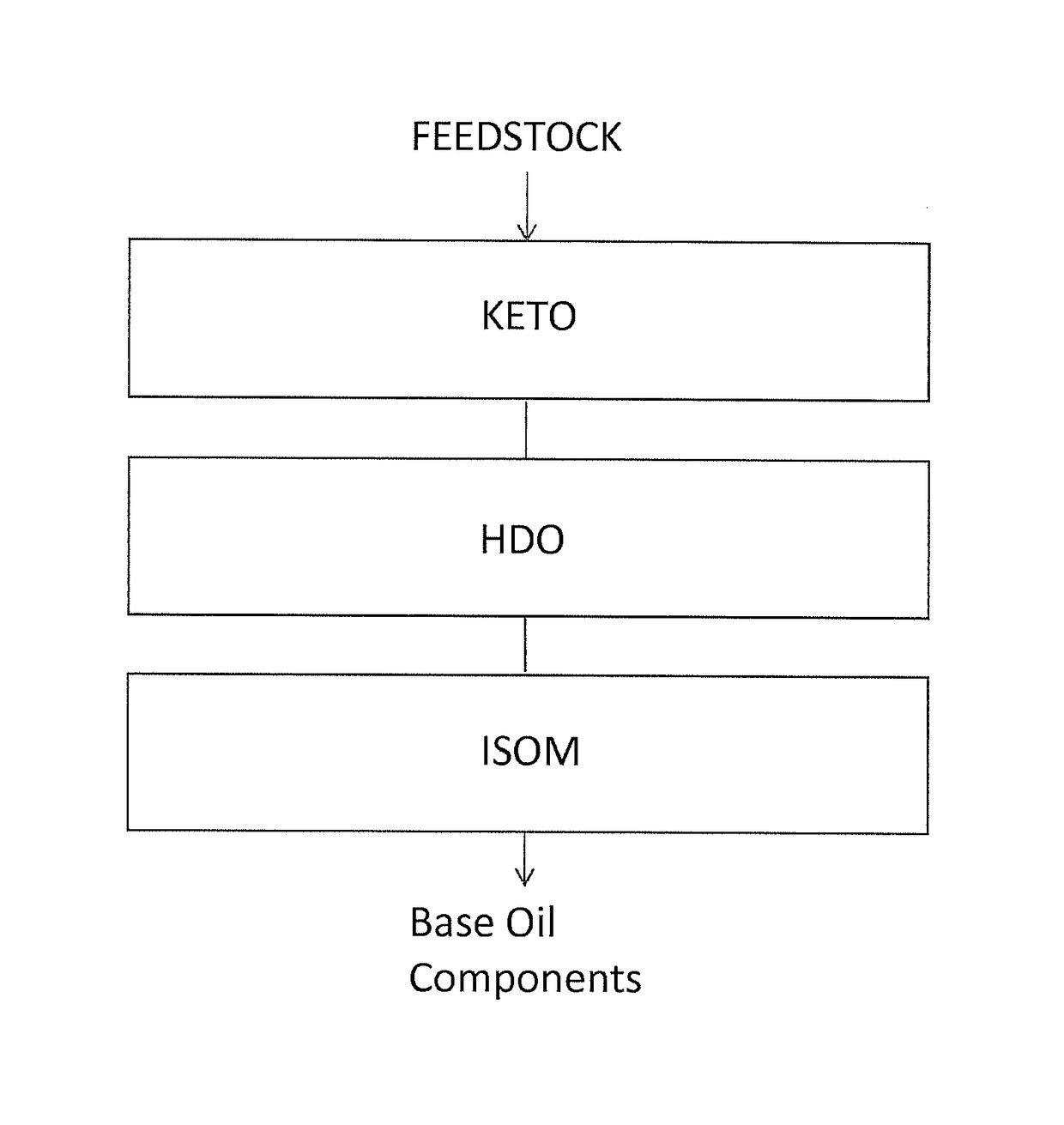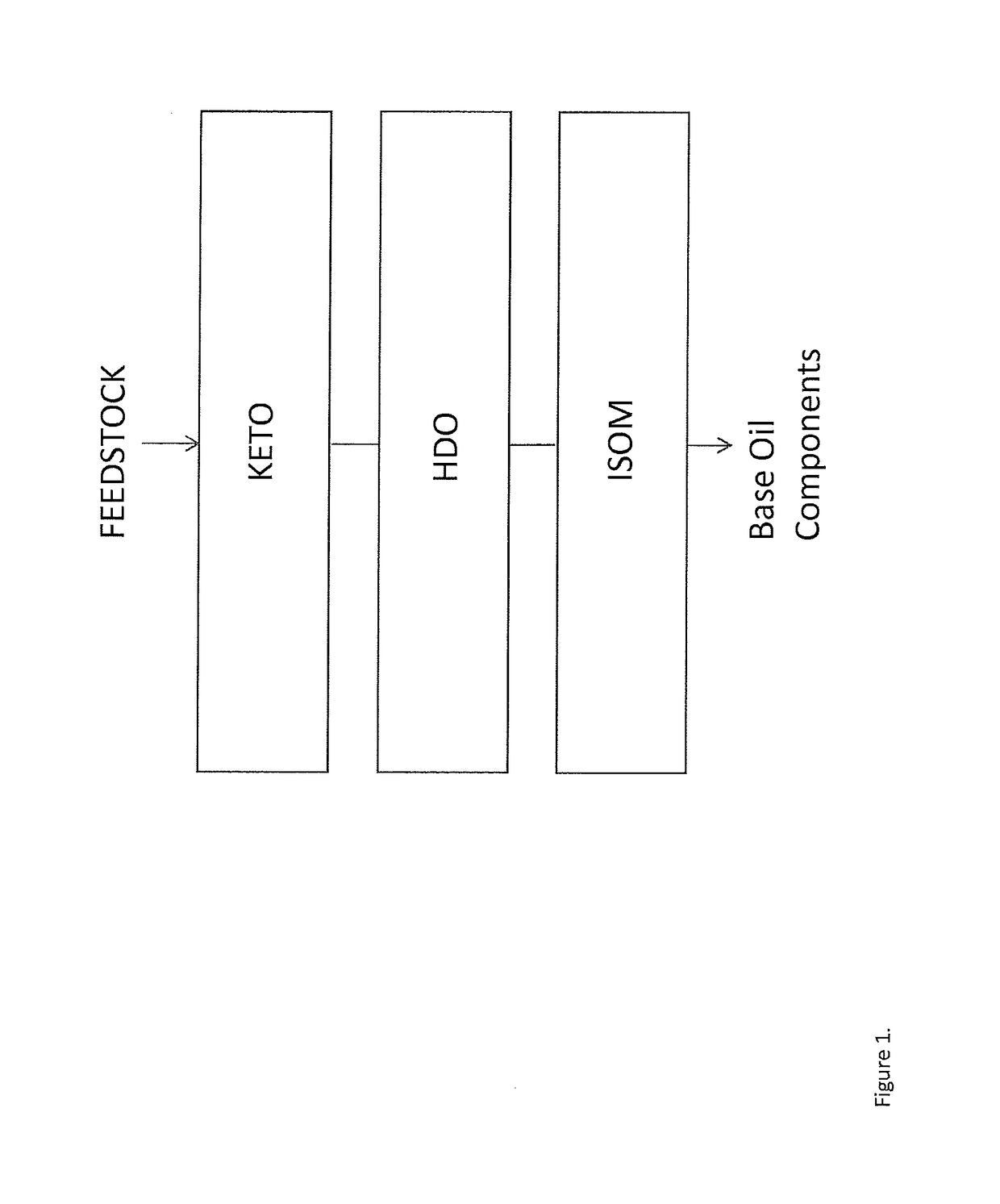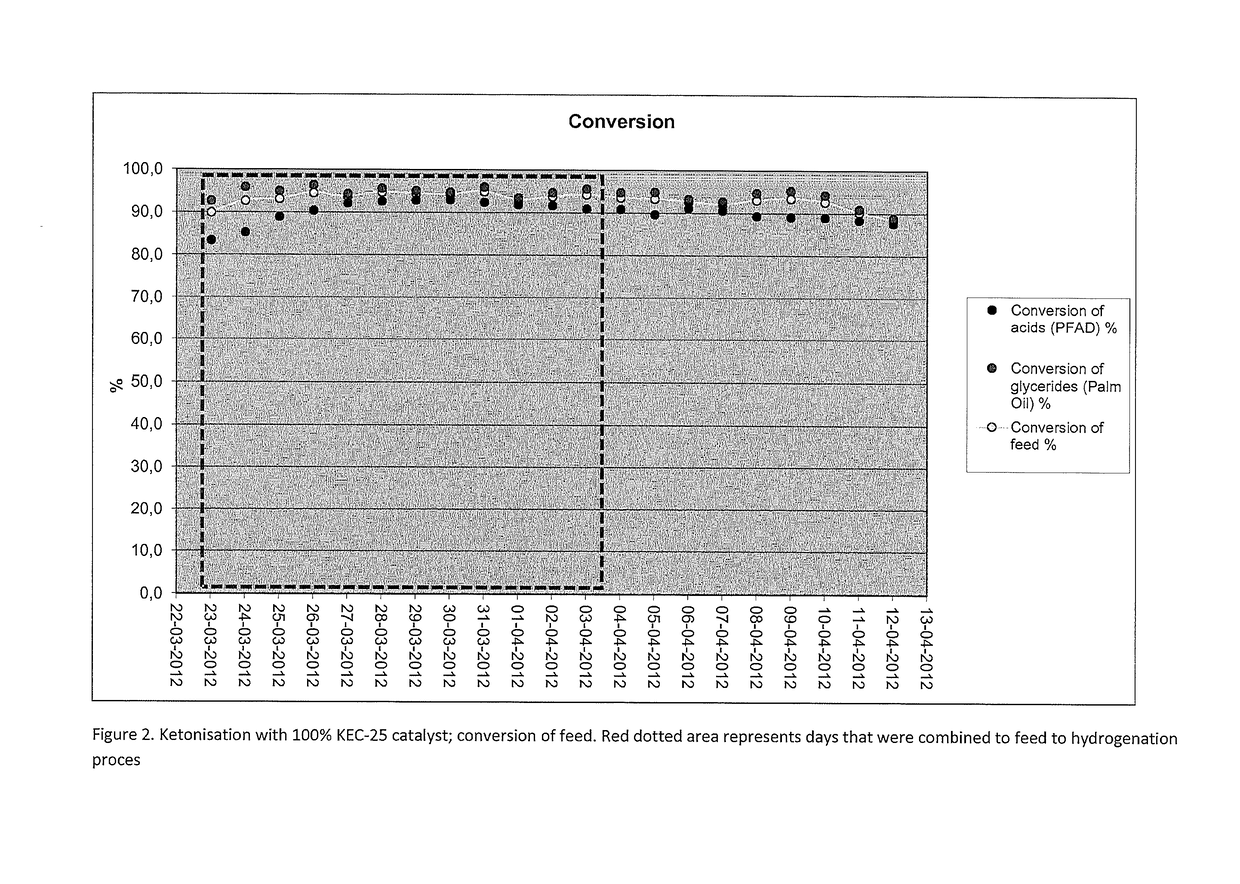Method for ketonisation of biological material
- Summary
- Abstract
- Description
- Claims
- Application Information
AI Technical Summary
Benefits of technology
Problems solved by technology
Method used
Image
Examples
example 1
[0069]A mixture of 70% palm oil (RPO PO) and 30% palm oil fatty acid distillate (PFAD) was subjected to ketonization in the presence of K2O / TiO2 catalyst. The reaction was carried out using hydrogen to hydrocarbon (H2 / HC) ratio of 500 NI / I (normalized liter per liter) and a weight hourly space velocity (WHSV) of 1.0 h−1. The temperature in the KETO unit (FIG. 1) was 365° C., and the pressure was 2 mPa.
[0070]After ketonization the product stream was led to a liquid / gas separator wherein the gas stream was separated from the liquid product stream comprising the ketones; 89% was ketone product, and 11% was gas product.
[0071]The content of ketones having a hydrocarbon chain length of more than 24 was 58.1%.
[0072]Table 1 shows the process conditions and the characteristics of the two product streams.
TABLE 1Process conditions and product distribution in the ketonisation testLiquid sampleTotal massanalysisbalanceTest120323-120403120323-120403FeedPO (70%)PO (70%)KETONISATIONPFAD (30%)PFAD (...
example 2
[0079]The liquid ketone product stream obtained in example 1 was subjected to hydrodeoxygenation in the presence of a NiMo catalyst. The reaction was carried out using hydrogen to hydrocarbon (H2 / HC) ratio of 1000 NI / I and a weight hourly space velocity (WHSV) of 1.0 h−1. The temperature in the HDO unit (FIG. 1) was 310° C., and the pressure was 5 mPa.
[0080]After hydrodeoxygenation the product stream was led to a liquid / gas separator, wherein the gas stream along with water was separated from the liquid product stream comprising the ketone derived paraffins (mainly C31, C33 and C35 hydrocarbons). The content of paraffins having an average hydrocarbon chain length of 24 or more was 59%, calculated from the starting material and 69% calculated from obtained liquid hydrocarbons.
[0081]Table 2 shows the process conditions and the characteristics of the product stream.
TABLE 2Process conditions and product distributionin the hydrodeoxygenation testLiquid sampleTotal massanalysisbalanceTest...
example 3
[0082]The liquid waxy hydrocarbon product stream obtained in example 2 was further subjected to isomerisation in the presence of a wax isomerisation catalyst. The reaction was carried out using hydrogen to hydrocarbon (H2 / HC) ratio of 800 NI / I and a weight hourly space velocity (WHSV) of 1.0 h−1. The temperature in the ISOM unit (FIG. 1) was 312° C., and the pressure was 5 mPa.
[0083]After the isomerisation step the product stream was led to a liquid / gas separator, wherein the gas stream was separated from the liquid product stream comprising the base oil components. The content of base oil having an average hydrocarbon chain length of 24 or more was 47%, calculated from starting material and 56% calculated from the obtained liquid hydrocarbons.
PUM
| Property | Measurement | Unit |
|---|---|---|
| Temperature | aaaaa | aaaaa |
| Temperature | aaaaa | aaaaa |
| Temperature | aaaaa | aaaaa |
Abstract
Description
Claims
Application Information
 Login to View More
Login to View More - R&D
- Intellectual Property
- Life Sciences
- Materials
- Tech Scout
- Unparalleled Data Quality
- Higher Quality Content
- 60% Fewer Hallucinations
Browse by: Latest US Patents, China's latest patents, Technical Efficacy Thesaurus, Application Domain, Technology Topic, Popular Technical Reports.
© 2025 PatSnap. All rights reserved.Legal|Privacy policy|Modern Slavery Act Transparency Statement|Sitemap|About US| Contact US: help@patsnap.com



